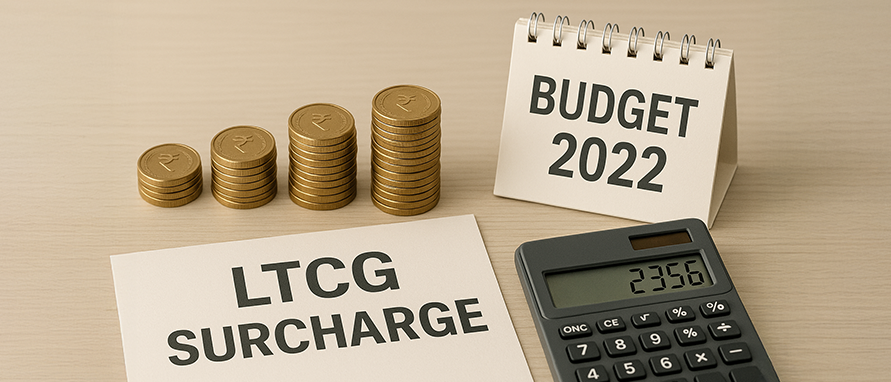For the uninitiated, long term capital gain is usually paid when you as an investor sell a long-term capital asset – held for a minimum duration of more than twelve months in the case of equity shares, more than twenty four months in the case of shares that are unlisted or in the case of immovable property, and more than thirty six months for any other asset. While the basic tax rate levied on long term capital gain on assets used to range from ten to twenty percent depending on the asset class, surcharge refers to the additional charges levied based on your total income.
Before the recommended changes in the surcharge pricing, a cap of 15% was only applicable on long term capital gain on equity shares or equity-oriented mutual funds.
Finally, if your income was above Rs. 5 Crores, you would be charged a surcharge of 37% on the long term gains generated by the assets you held. Thus, as per the revised capping norms, you will mainly benefit if your income lies above Rs. 2 Crores.
In her speech on the 1st of February 2022, the Finance Minister stated that in the past, while a maximum surcharge of 15% was only applicable on long term capital gains on equity shares and units, with the rate going up to as much as 37% on other graded assets – starting this fiscal year, the surcharge will 15% for gains arising from any form of asset.
This cap on the long term capital gain surcharge is a huge boon for individual taxpayers, further facilitating the sale of assets other than equity shares and mutual funds – such as those who earlier had to pay a higher surcharge in the case of sale of a property. Apart from being highly beneficial to individual taxpayers, these changes will also greatly abate the tax burden on those investing in startups, manufacturing, and bonds. This new change in the surcharge slabs is aimed to bring about greater uniformity among holders of the various long-term asset classes.
As a result of these revisions, you as an investor or entrepreneur with equity can expect more payback for helping build a company, which is in tandem with the Central Government’s ‘Make in India’ rhetoric.





































